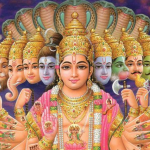The Spiritual Significance of Meditation Practices in Indian Traditions

Meditation is a central practice in many of India’s spiritual traditions, serving as a pathway to self-realization, inner peace, and divine connection. It is more than just a method of relaxation; it is a profound spiritual discipline that helps practitioners deepen their understanding of their true nature and their connection with the universe. The roots of meditation in India stretch back thousands of years, with practices deeply embedded in Hinduism, Buddhism, and Jainism. Each tradition has its own approach to meditation, but the common thread remains the quest for spiritual enlightenment and personal transformation.
Meditation in Hinduism
In Hinduism, meditation is an essential part of spiritual growth. Known as dhyana, it is regarded as a means of focusing the mind and transcending the physical world to experience the ultimate reality, Brahman. Hindu meditation practices are guided by the principles outlined in ancient scriptures such as the Upanishads and the Yoga Sutras of Patanjali.
The ultimate goal of Hindu meditation is to attain moksha, or liberation from the cycle of birth and death. Through meditation, practitioners can control the fluctuations of the mind, known as chitta vritti, and reach a state of stillness where they experience unity with the divine. Techniques like Mantra Meditation, Kundalini Meditation, and Yoga Nidra are often used to achieve heightened states of awareness, and they encourage self-discipline, self-awareness, and devotion.
The practice of mantra meditation, for instance, involves the repetition of sacred sounds (mantras) that are believed to have divine power. Chanting mantras like “Om” is considered a way to resonate with the vibrations of the universe and connect with the divine consciousness.
Meditation in Buddhism
Meditation is at the heart of Buddhist practice and is considered the key to reaching nirvana, or the cessation of suffering. The Buddha himself attained enlightenment through deep meditation under the Bodhi tree. In Buddhism, meditation is seen as the means to develop wisdom, ethical conduct, and mental discipline, which leads to liberation from the cycle of rebirth.
The two main forms of meditation in Buddhism are Vipassana (insight meditation) and Samatha (calm-abiding meditation). Vipassana focuses on developing mindfulness and insight into the impermanent nature of reality, while Samatha involves concentration on a single object, such as the breath, to cultivate a tranquil mind.
Through these practices, Buddhists aim to develop a deep understanding of the Four Noble Truths and walk the Eightfold Path to end suffering and attain enlightenment. Meditation helps practitioners gain a profound understanding of the nature of suffering and attachment, which is essential for breaking free from samsara, the cycle of birth, death, and rebirth.
Meditation in Jainism
In Jainism, meditation is a tool for achieving spiritual purity and liberation. Jain meditation practices are rooted in the belief that by controlling the mind, body, and speech, one can rid oneself of karmic influences and attain kevaljnana, or supreme knowledge. Jains focus on non-violence (ahimsa) and detachment, and meditation is seen as a way to purify the soul and avoid accumulating negative karma.
Jain meditation techniques often involve deep concentration and visualization practices, such as pratikraman (a form of repentance) and samayik (a period of meditation aimed at achieving equanimity). These practices are designed to cultivate a serene mind, free from attachment and distraction, which is essential for spiritual progress.
The Common Thread in Indian Meditation Traditions
Despite the differences in the meditation techniques of Hinduism, Buddhism, and Jainism, the spiritual significance of meditation remains consistent. Meditation in all these traditions is used as a means of transcending the material world and experiencing a deeper connection with the divine or ultimate reality. It is a discipline that trains the mind to be still, focused, and aware, helping practitioners break free from the distractions and attachments of daily life.
At its core, meditation is about self-realization. It is a journey of inner discovery where practitioners seek to understand their true nature beyond the ego, emotions, and desires. Through sustained meditation practice, individuals aim to attain enlightenment, which brings profound peace, wisdom, and compassion. The spiritual significance of meditation in Indian traditions, therefore, lies in its power to transform the mind, heart, and soul, leading individuals to ultimate freedom from suffering and the realization of their divine essence.
Conclusion
Meditation is a timeless spiritual practice in India, integral to its diverse religious traditions. Whether it is to achieve union with Brahman in Hinduism, attain nirvana in Buddhism, or purify the soul in Jainism, meditation provides a path for personal transformation and spiritual awakening. Its significance transcends religious boundaries, offering universal benefits that can lead to greater peace, wisdom, and fulfillment. As India continues to embrace meditation, the wisdom of these ancient practices will remain a beacon of spiritual light for generations to come.










